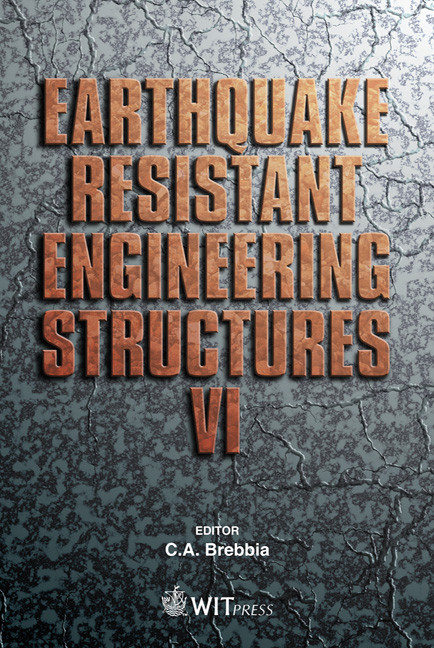Modeling Of The Structural Impact Of Seismically Isolated Buildings
Price
Free (open access)
Transaction
Volume
93
Pages
10
Published
2007
Size
574 kb
Paper DOI
10.2495/ERES070131
Copyright
WIT Press
Author(s)
P. Polycarpou, L. Papaloizou, P. Komodromos & M. C. Phocas
Abstract
Structural impact can be considered using methods that are based on either stereomechanical or force-based approaches. The force-based approach, which uses contact springs that are automatically formed during impact, is more suitable for simulations of multiple deformable bodies, such as colliding buildings. After making a comparison among the most common impact models of the force-based approach, a modified impact model is proposed as a variation of the linear viscoelastic impact model (Kelvin-Voigt). The modified viscoelastic impact model avoids tensile impact forces during detachment and enables the consideration of permanent plastic deformations due to poundings. The proposed impact model is used for simulations of poundings of seismically isolated buildings with adjacent structures, in order to assess the influence of potential structural impact on the effectiveness of seismic isolation. Poundings are assumed to occur at the isolation level between the seismically isolated building and the adjacent moat wall whenever the available seismic gap is exceeded due to a strong earthquake excitation. The simulations reveal that poundings may substantially increase floor accelerations, especially at the floor where impacts occur, and excite higher modes of vibration, increasing the interstory deflections. Keywords: poundings, structural impact, seismic isolation, seismic gap. 1 Introduction Seismic isolation introduces flexibility, or a sliding mechanism, at the isolation level of a relatively stiff building, shifting its fundamental period outside the dangerous for resonance range, or preventing the transmission of a shear force higher than a certain value, in order to reduce the induced seismic loads.
Keywords
poundings, structural impact, seismic isolation, seismic gap.





